Year 1 Physics Lab

We make physics more real. In this lab, first year physics undergraduates gain practical experience in the working concepts of mechanics, optics, vibrations, waves, electricity, magnetism and quantum physics.
All experiments are designed to complement the first year theoretical physics courses, allowing students to understand how physics principles lie at the core of seemingly mundane events and observations in daily life, such as collisions, moving body dynamics, etc.
Our team also provides equipment for teaching and physics demonstrations to faculty, staff, and students. The laboratory is also a venue for special workshops for education and outreach.
Location
We are located on Level 2 in the SPMS Building (SPMS-PAP-02-08).
NTU Maps link
Contact Information
- Ms Tam Qian Xin ([email protected])
Year 1 Demonstration Equipment

Gaussian Gun
Quantity: 1
Cart to explain Newton’s laws

Newton’s Cart
Quantity: 1
Cart to explain Newton’s laws

High Low Road
Quantity: 1
Demonstration to explain kinematics of motion along different roads
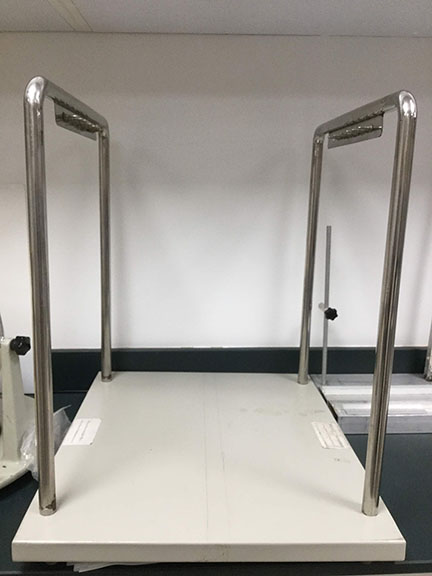
Base for Newton's Cradle
Quantity: 1
Demonstration for energy and momentum conservation in a series of metal spheres suspended by strings
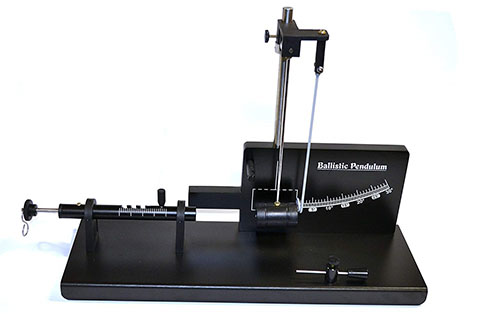
Ballistic Pendulum
Quantity: 1
Demonstration of energy conservation and momentum conservation in collisions

Bicycle Wheel Gyroscope
Quantity: 2
Bicycle wheel as a gyroscope to show the stabilization due to angular momentum conservation

Simple Metal Gyroscope
Quantity: 3
Classic gyroscope for demonstration of conservation of angular momentum

Projectile Launcher
Quantity: 1
Tool to demonstrate projectile motion
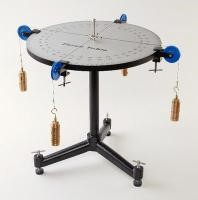
Force Table
Quantity: 1
Demonstration of vector addition of forces

Ring & Disc Moment of Inertia Demonstrator
Quantity: 1
Demonstration of moment of inertia of disc/ring rolling down an inclined plane

Ring Moment of Inertia Demonstrator
Quantity: 1
Demonstration of moment of inertia of ring with varying mass distribution rolling down an inclined plane

Digital Stroboscope with Flash Rate Display
Quantity: 1
Study of cyclically moving (rotating, oscillating, vibrating) object using flashes at the vibration frequency ( or multiple of vibration frequency) making the object appear stationary or slowed down

Rotational Theorem
Quantity: 1
Demonstrates the relationship between observed angular acceleration, torque and angular moment of inertia

Hooke's Law
Quantity: 1
Demonstration of Hooke’s Law using a spring mounted on a stand with pointer indicating extension on scale as slotted weights are added to holder at the base of spring
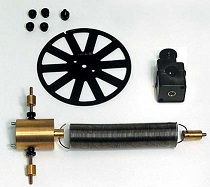
Wilberforce Pendulum
Quantity: 2
Demonstration of torsional and translational motion in oscillating pendulum
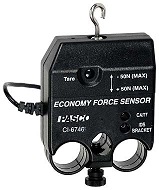
Economy Force Sensor
Quantity: 2
Records ±50N with 0.03N resolution, can be mounted on carts or rod clamps. Needs PC with specific software for data acquisition
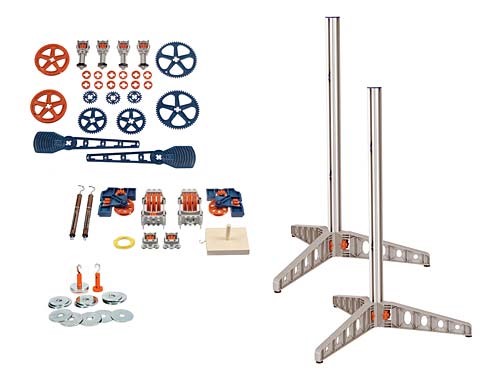
Simple Machines Kit
Retort stands with pulleys, gears, levers, spring scales, set of weights, weight hangers

1 Set of Tuning Forks (8)
Quantity: 2
Demonstration of waves and oscillations
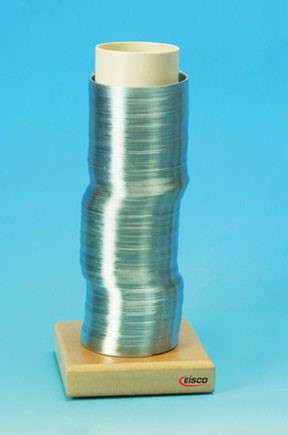
1 Slinky Tube with Stand
Quantity: 1
Demonstration of waves and standing waves

Differential & Sympathetic Tuning Forks
Quantity: 1
Demonstration of resonance, beat frequency and sympathetic vibrations

String Vibrator
Quantity: 1
Demonstrate standing waves in a string and study their dependence on string tension, length, mass and vibration frequency

Mechanical Wave Driver
Quantity: 3
0.1Hz-5kHz frequency vibrations, vertical/horizontal mounting, needs function generator with at least ±8V, 0.5A

Chladny Plates
Quantity: 4

Waves & Oscillations Kit
Quantity: 1
Tuning forks, snaking and slinking tube, spring, pendulum bob

Fire Syringe
Quantity: 1
Demonstration of adiabatic compression of gas to ignite tinder

Kinetic Theory Model
Quantity: 1
Visual representation of molecular movement in gases. Needs a 6V DC source capable of providing 2.5A current

Newton's Ring Apparatus
Quantity: 1
Demonstration of Newton’s rings interference pattern by adjusting the air gap between two glass surfaces pressed together
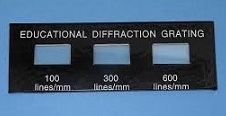
Education Diffraction Grating
Quantity: 2
Demonstration of diffraction via gratings of varying groove density
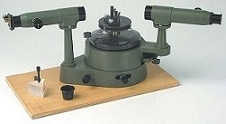
Spectormeter
Quantity: 2
Demonstration of practical working of spectrometer
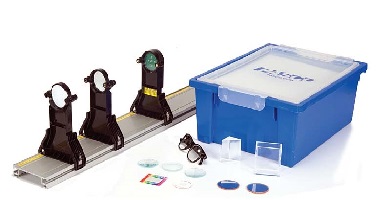
Optics Kit
Quantity: 1
50 mm optic mounts (3), 50mm convex lens and concave lens, 50mm convex/concave mirror, Wireless light source, Refraction tank, prism


Set of glass plates with different slits for interference and diffraction demo
Quantity: 1
Set of glass plates with slits for interference and diffraction demonstrations in combination with a clear glass single filament lamp ( not included).
It is portable and can fit in your palm, unlike the previous item.


Polarized Light Interference
Quantity: 1
This device illustrates the extinction and polarized light interference phenomenon using two polarizers. Images can be projected onto a screen as well.
It is portable and can fit in your palm, unlike the previous item.

Radiometer
Quantity: 1
Measurement of electromagnetic radiation intensity
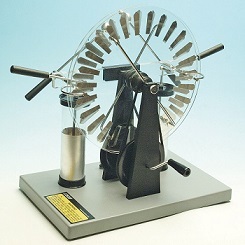
Wimhurst Machine
Quantity: 4
Demonstration of electrostatic generation

Hand Crank Van de Graaff Generator, Generator
Quantity: 1
Demonstration of conversion of mechanical energy to electrical energy by buildup of static charge

Electroscope
Quantity: 1
Basic electrostatic experiments, indication of AC/DC voltages
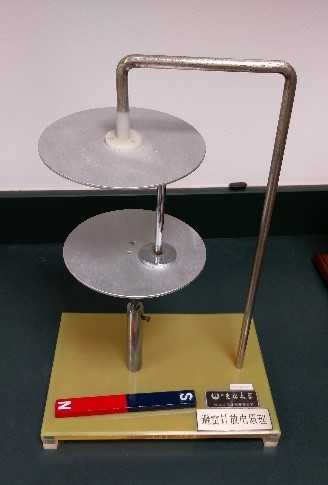
Lightning Rod Discharge Theorem
Quantity: 1
This instrument is designed using point discharge principle to prevent strong sparks. It compares the discharge phenomenon between a spherical copper block and a tapered copper block
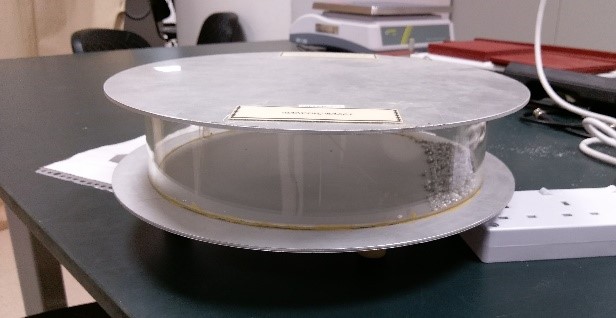
Static Electricity Jump Ball
Quantity: 1
This device demonstrates static electricity by jumping of small balls between two charged plates

Electrostatic Precipitator
Quantity: 1
This instrument uses a Wimshurst Machine to charge the copper wire surrounding the glass tube. The air molecules of the glass tube that are near the axis of the strong ionization field are formed into positive ions. As the smoke is negatively charged, it stays within the tube as the air molecules pulls it towards the walls of the glass tube due to the charged copper wires.

Magnectic Force on Conductor
Quantity: 1
Demonstration of behavior of current carrying conductor in the presence of a external magnetic field

DC Motor Kits
Quantity: 10
Basic working of DC motors and demonstration of principles of electricity, magnetism and electric motors
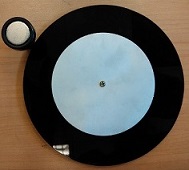
Lenz Law Spinning Disc
Quantity: 1
Demonstration of Lenz’s law where spinning disk comes to a stop when a magnet is brought close to the spinning disk
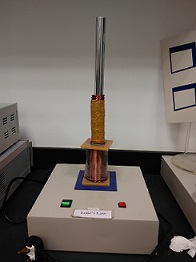
Lenz Law Apparatus
Quantity: 1
Demonstration of Lenz’s law

Faraday's Law Apparatus
Quantity: 1
Demonstration of Faraday’s law

Force Between Parallel Conductors Demonstration
Quantity: 1
Demonstration of magnetic force between two parallel current carrying conductors
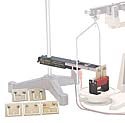
Current Balance
Quantity: 1
Measurement of force felt by a current carrying wire in a magnetic field

Primary & Secondary Coils
Quantity: 2
Outer coils, inner coil and core for experiments on transformer coupling, inductive reactance and electromagnetism

Electromagnetism Induction
Quantity: 2
Demonstrates the effect of electromagnetic inductions based on several phenomena.
Year 1 Laboratory Equipment
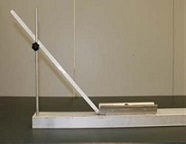
Inclined Track
Quantity: 4
Study of motion along inclined plane for spheres/carts

Circular Potential Plate
Quantity: 2
Study of scattering of particles under the action of central mechanical potential

Air Track with Air Blower and Gliders
Quantity: 4
Study of linear motion of bodies, collisions, oscillations etc

Rotary Motion Sensor
Quantity: 4
Measures angular position, velocity and acceleration. Needs connection to PC and interface with specific software
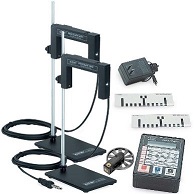
Photogates and Picket Fences with Smart Timer
Monitor motion of objects passing through gate or picket fence.

Michelson Interferometer with He-Ne Laser
Quantity: 3
Optical schematic enabling interference of laser beams giving a distinct interference pattern.

Light Sensors
Quantity: 2
Sensors monitoring light intensity for interference and diffraction patterns. Need PC with interface and specific software

Microwave Transmitters & Receivers
Quantity: >5
Microwave transmitters (10.5GHz, 15mW) with DC adaptor. Battery powered (2xD) receivers

Basic Optics Diode Laser
Quantity: 2
650 nm diode laser , < 1mW output for basic optics applications
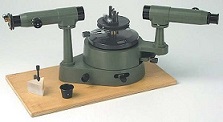
Student Spectrometer
Quantity: 4
For study of spectrum of elements using prism or diffraction grating. Typically used with sodium vapor lamp or spectral tubes

Function Generators
Quantity: 3
Sine, triangle (0-20V pp) and square wave (0-10V pp) , DC output 0-10 V, frequency 0.001-99999 Hz
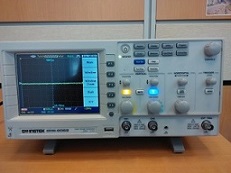
Oscilloscope
Quantity: 4
2 channels, 27 measurements, 60MHz bandwidth, 25kpoints, 1GSa/s, remote control via USB and RS-232
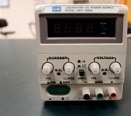
DC Power Supplies
Quantity: 2
DC power supply (0-18V, 0-3A) capable of constant voltage and constant current operation

Electronic Boards
Quantity: 6
AC/DC electronics board with 6mH inductor, rheostat, 3 small light bulbs and wire connectors.

Helmholtz Coils
Quantity: 2
200 turn, 10 cm radius copper coils with a maximum current 2A with distance between coils adjustable

Magnetic Field Sensors
Quantity: 2
Measures magnetic field upto 1000 Gauss along axial and radial directions. Need PC with specific software for control and data acquisition














/enri-thumbnails/careeropportunities1f0caf1c-a12d-479c-be7c-3c04e085c617.tmb-mega-menu.jpg?Culture=en&sfvrsn=d7261e3b_1)

/cradle-thumbnails/research-capabilities1516d0ba63aa44f0b4ee77a8c05263b2.tmb-mega-menu.jpg?Culture=en&sfvrsn=1bc94f8_1)

7e6fdc03-9018-4d08-9a98-8a21acbc37ba.tmb-mega-menu.jpg?Culture=en&sfvrsn=7deaf618_1)
